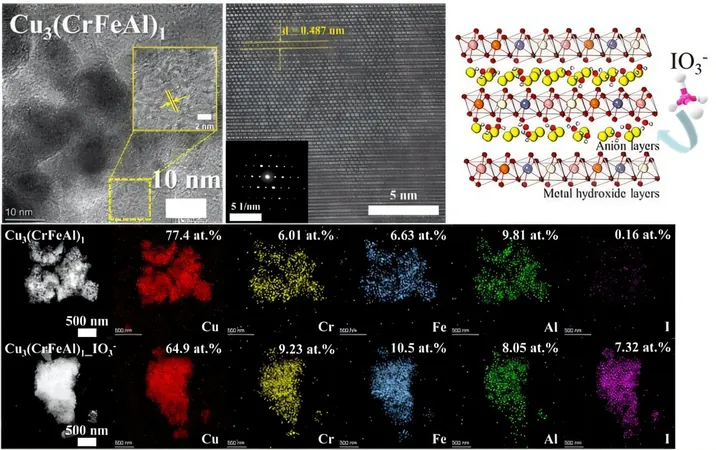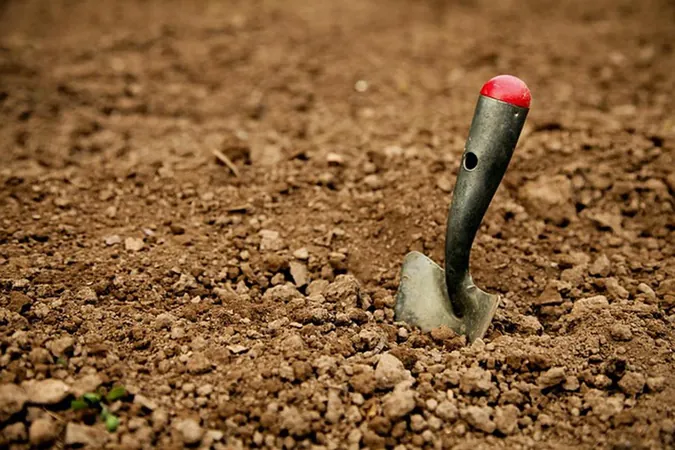
Revolutionary AI Breakthrough Unveils New Material to Eradicate Radioactive Iodine Contamination
2025-07-03
Author: Arjun
A Game-Changer in Nuclear Waste Management
The management of radioactive waste is a daunting challenge, especially when it comes to radioactive iodine. With an astonishing half-life of 15.7 million years for its isotope I-129, and its incredible mobility and toxicity to living organisms, iodine poses significant environmental and health threats.
Korean Researchers Harness AI for Groundbreaking Discovery
A pioneering team of researchers from Korea has made headlines by leveraging artificial intelligence to discover a revolutionary new material capable of removing radioactive iodine from contaminated environments. This discovery is poised for commercialization through exciting collaborations between industry and academia, spanning everything from iodine-adsorbing powders to advanced water treatment filters.
Innovative Techniques Drive Material Development
Led by Professor Ho Jin Ryu from the Department of Nuclear and Quantum Engineering, and collaborating with Dr. Juhwan Noh of the Korea Research Institute of Chemical Technology, the team has developed a cutting-edge AI technique to identify materials that efficiently combat radioactive iodine contamination—details of which are documented in the Journal of Hazardous Materials.
From Iodate to Effective Solutions
Current studies reveal that radioactive iodine typically presents itself as iodate (IO₃⁻) in aqueous solutions, but traditional silver-based adsorbents are proving ineffective due to their inability to strongly bind iodate. The urgency for new adsorbent materials that can tackle iodate contamination has never been greater.
AI-Driven Discoveries: Layered Double Hydroxides Shine
By utilizing an innovative machine learning strategy, Professor Ryu’s team focused on compounds known as Layered Double Hydroxides (LDHs), which possess diverse metal elements and favorable structures for anion adsorption. Their standout creation, a multi-metal LDH named Cu₃(CrFeAl), demonstrated remarkable performance by removing over 90% of iodate.
Streamlined Discovery Process with AI
Thanks to AI-driven active learning, the research team effectively navigated a vast array of potential metal combinations, yielding breakthrough results with only 16% of all candidate materials tested. This dramatic reduction showcases how advanced technology can surpass traditional methods rife with trial and error.
Looking to the Future: Patents and Commercialization
In the wake of these findings, the research team has filed a domestic patent application and is in the process of securing international patents. Their sights are set on refining the performance of this innovative material in various conditions, pursuing commercialization through robust partnerships that aim to develop filters specifically designed for treating contaminated water.
A New Era for Nuclear Cleanup
Professor Ho Jin Ryu emphasized, "This study highlights the extraordinary potential of artificial intelligence in swiftly identifying radioactive decontamination materials from an expansive pool of new candidates. This breakthrough is poised to significantly advance research in developing novel materials for nuclear environmental cleanup, paving the way for safer energy solutions."

 Brasil (PT)
Brasil (PT)
 Canada (EN)
Canada (EN)
 Chile (ES)
Chile (ES)
 Česko (CS)
Česko (CS)
 대한민국 (KO)
대한민국 (KO)
 España (ES)
España (ES)
 France (FR)
France (FR)
 Hong Kong (EN)
Hong Kong (EN)
 Italia (IT)
Italia (IT)
 日本 (JA)
日本 (JA)
 Magyarország (HU)
Magyarország (HU)
 Norge (NO)
Norge (NO)
 Polska (PL)
Polska (PL)
 Schweiz (DE)
Schweiz (DE)
 Singapore (EN)
Singapore (EN)
 Sverige (SV)
Sverige (SV)
 Suomi (FI)
Suomi (FI)
 Türkiye (TR)
Türkiye (TR)
 الإمارات العربية المتحدة (AR)
الإمارات العربية المتحدة (AR)